|
|
| |
|
| |


SpringerBriefs in
Environment, Security, Development and Peace (ESDP)
A Peer Reviewed Book Series
Edited by
Hans Günter Brauch
Free University of Berlin and AFES-PRESS
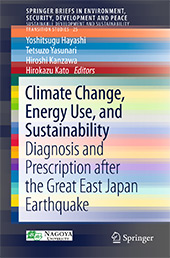 |
Hayashi, Y., Yasunari, T., Kanzawa, H., Katoh, H. (Eds.): Climate Change, Energy Use, and Sustainability Diagnosis and Prescription after the Great East Japan Earthquake. SpringerBriefs in Environment, Security, Development and Peace, Vol. 20 - Subseries: Sustainable Development and Sustainability Transition Studies (Cham – Tokyo - Heidelberg – New York – Dordrecht – London: Springer-Verlag, 2015).
Japanese edition published by Akashi Shoten, Tokyo, 2013.
ISBN (Print): 978-4-431-55098-3
ISBN (Online/eBook): 978-4-431-55099-0
DOI: 10.1007/ 978-4-431-55099-0
Order Form
Order this book on the Springer Website
where the electronic version and individual chapters can be obtained |
| |
|
About this Book
This book is an outcome of the symposium “Climate Change, Resource-Energy Use and Sustainability of the Earth and Human Society,” organized by the Nagoya University Center of Excellence Program “From Earth System Science to Basic and Clinical Environmental Studies” and held at Nagoya University in February 2012, and presents papers by four eminent researchers. 1) Syukuro Manabe, who was honored in 2008 by the Earth Hall of Fame Kyoto, together with Ms. Maathai and Ms. Brundtland, describes the mechanisms of extreme weather, drought, and flood that were caused by climate change due to CO2 emissions. 2) Ernst Ulrich von Weizsäcker, co-chair of the Club of Rome, describes “Factor 4 and 5” concepts such as technological progress and redesigning socio-economic systems, e.g. taxation and stresses the importance of humanity. 3) Hans-Peter Dürr, ex-president of the Max Plank Physics Institute as a successor to Heisenberg, explains the mechanism of a living Earth sustained by accumulated energy resources provided by the sun. He clarifies a point on preserving the dynamic stability of minerals and life on Earth. 4) Shohei Yonemoto, a well-known political scientist focusing on sustainability, explains environmental politics and why the IPCC and UNFCCC framework were established on the basis of precaution principles. He puts forward a new concept called Futurology which considers population and food problems from a Malthusian standpoint and incorporates them into issues as climate change and natural disasters.
Each paper is followed by an interview with the eminent researcher, which illustrates the circumstances where he has been involved with his disciplines, a concise sketch of his work, a way of his thinking, and so on. The record of a panel discussion on the topics is also given to extract the ideas of the eminent researchers which were not well expressed in their papers.
This book is written and based on a very simple but concrete idea and provides the readers with a chance to consider the shape of Future Earth.
Table of Contents
Global Warming and Water Resources: From Basic Science to Environmental Studies.- Factor 5: Towards an Affluent Society with Least Use of Resources.- Energy and the Use of Nuclear Power.- Politics in Global Change: A Treat Called Global Warming.- Considering Sustainable Society after the Great East Japan Earthquake.
On the Editors
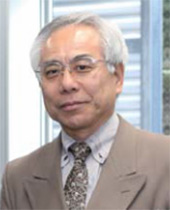 |
Yoshitsugu Hayashi (Japan) is Professor and Director of the International Research Center for Sustainable Transport and Cities of the Graduate School of Environmental Studies, Nagoya University. Born in Mie Prefecture, Japan in 1951, Dr Hayashi was awarded Dr.-Eng degree at the University of Tokyo in 1979. He worked as Lecturer at the University of Tokyo, and Associate Professor and Professor at Nagoya University’s School of Engineering, before taking up his current position in 2001. He served as the Leader of the Nagoya University Global COE Program “From Earth System Science to Basic and Clinical Environmental Studies” from April 2013 to March 2014. He serves as Director of the Education and Research Center for Sustainable Co-Development of the Graduate School of Environmental Studies from April 2014. He was an Assistant (for international affairs) to Nagoya University’s President, and worked as Dean of the Graduate School of Environmental Studies. He has worked as Vice-President of the Japan Society of Civil Engineers, and Chair of World Conference on Transport Research Society (WCTRS) special interest group on transport - land use interactions since 1989. He currently serves as President of WCTRS. He has authored various books including Land Use, Transport and the Environment (Kluwer), Urban Transport and the Environment: An International Perspective (Elsevier), Transport Moving to Climate Change Intelligence: New Chances for Controlling Impacts of Transport after the Economic Crisis (Springer). Among other honors, he was awarded the Best Paper Prize by the Japan Society of Civil Engineers, the Orange Prize by WCTRS. He became a member of the Club of Rome in July 2015.
Website: <http://www.genv.nagoya-u.ac.jp/ge1/hayashi/hayashi.html> |
| |
|
Tetsuzo Yasunari (Japan) is Director-General of the Research Institute for Humanity and Nature. Born in Yamaguchi Prefecture, Japan in 1947, Dr Yasunari graduated from the Faculty of Science, Kyoto University in 1971, and continued his research at the same university’s Graduate School of Science to obtain his master’s and doctoral degrees. He started teaching at Kyoto University’s Center for Southeast Asian Studies in 1977, and moved to the University of Tsukuba in 1982 where he has taught as Lecturer, Associate Professor, and Professor. From 2002 to 2013, he was Professor of the Hydrospheric Atmospheric Research Center (and the Graduate School of Environmental Studies) of Nagoya University. He served as Director of the university’s Study Consortium for Earth-Life Interactive Systems, as well as the Leader of the Nagoya University Global COE Program “From Earth System Science to Basic and Clinical Environmental Studies” from July 2009 to March 2013. He has held his current position since April 2013. He specializes in meteorology, climatology, and earth environmental studies. He has authored Climate and Glaciers in Himalaya (in Japanese; co-authored, Tokyodoshuppan), Global Environment and Asia (in Japanese; co-authored, Iwanami Shoten), and others.
Website: <http://www.chikyu.ac.jp/> |
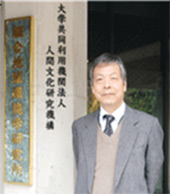 |
| |
|
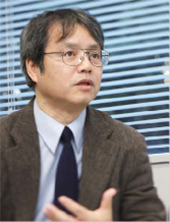 |
Hiroshi Kanzawa (Japan) is Professor of the Graduate School of Environmental Studies, Nagoya University. He has served as Dean of the Graduate School since April 2015. Born in Gunma Prefecture, Japan in 1953, Dr Kanzawa graduated from the Faculty of Science, Kyoto University in 1976, and completed a doctoral course at Kyoto University in 1984, which awarded him Doctor of Science. He started to work as Assistant Professor at the National Institute of Polar Research in 1981. He became Research Program Manager of the Center for Global Environmental Research of the National Institute for Environmental Studies in 1993, and Head of the institute’s Atmospheric Physics Section in 1998. He has held his current position since 2003. In the meantime, he went to the Antarctic as a participant in the Japanese Antarctic Research Expedition, and worked at the Department of Atmospheric Sciences, University of Washington (USA) as a visiting scholar in 1987. In 1997 he led a campaign to launch giant balloons in Sweden to verify sensors installed on a satellite to observe the ozone layer over the polar region. He is currently working on atmospheric science issues concerning ozone depletion, global warming, etc. He won the Horiuchi Award of the Meteorological Society of Japan in 1997. He has authored Book of the Atmosphere (in Japanese; Poplar-sha), and others.
Website: <http://cloud.has.env.nagoya-u.ac.jp/index-jis.html> |
| |
|
Hirokazu Kato (Japan) is Associate Professor of the Graduate School of Environmental Studies, Nagoya University. Born in Gifu Prefecture, Japan in 1970, Dr Kato graduated from the Faculty of Engineering, Nagoya University in 1992, and continued his postgraduate study at the university’s Graduate School of Engineering to obtain a doctoral degree in 1997. He became Assistant Professor at Nagoya University’s Faculty of Engineering in 1997 and he has held his current position since 2001. He has won the Encouragement Award of the Society of Environmental Science, Japan, and the Eco-efficiency Award of the Life-Cycle Assessment Society of Japan, as well as others. He has co-authored Urban Transport and the Environment: An International Perspective (Elsevier), Transport Moving to Climate Intelligence: New Chances for Controlling Climate Impacts of Transport after the Economic Crisis (Springer), and others.
Website: <http://orient.genv.nagoya-u.ac.jp/kato/Jkato.htm> |
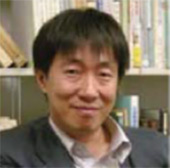 |
| |
|
On the Authors
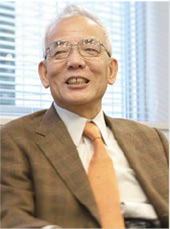 |
Syukuro Manabe (Japan) was Senior Meteorologist for the Program in Atmospheric and Oceanic Sciences of Princeton University, and Distinguished Invited Professor of Nagoya University. Born in Ehime Prefecture, Japan in 1931, Dr Manabe completed the doctoral course at the University of Tokyo, becoming Doctor of Science in 1958, and went to the United States in the same year. In 1968, he became Senior Research Meteorologist at the Geophysical Fluid Dynamics Laboratory, National Oceanic and Atmospheric Administration, and served as an Adjunct Professor at Princeton University. He pioneered the use of computers to simulate global climate change and natural climate variation, and has been a leader in this field of research. He returned to Japan in 1997 to take up the position of Director of the Global Warming Research Program at the Frontier Research Center for Global Change of the former Science and Technology Agency. He went to the United States again in 2001 to assume his current position. He won the Carl-Gustaf Rossby Research Medal of the American Meteorological Society as well as the Blue Planet Prize of the Asahi Glass Foundation in 1992, the Roger Revelle Medal and the Bowie Medal of the American Geophysical Union in 1993 and 2010, respectively, the Asahi Prize of the Asahi Shimbun Foundation in 1995, Milutin Milankovic Medal of the European Geophysical Society in 1998, and many others. He is also a member of the US National Academy of Science and an honorary member of the Japan Academy.
Website: http://www.princeton.edu/aos/people/faculty/manabe/index.xml |
| |
|
Ernst Ulrich von Weizsäcker (Germany) is Co-President of the Club of Rome, and Visiting Professor of the Graduate School of Environmental Studies, Nagoya University. He was awarded Honorary Doctor of Nagoya University in 2015. Born in Zürich, Switzerland in 1939, Dr Weizsäcker worked as President of the University of Kassel, Director of the United Nations Center for Science and Technology for Development, before founding the Wuppertal Institute for Climate, Environment and Energy (becoming its first president). In the same period, he was a member of the Bundestag (German Parliament) and contributed much to the promulgation of environmentalism. In the 1992 Rio de Janeiro Earth Summit, he put forward the “Factor Four” concept, of doubling wealth while reducing resource consumption.
He is a leading figure in the global environmental field.
His works include Earth Politics, Factor Four, Factor Five and many others, and he has been awarded the WWF’s Duke of Edinburgh Conservation Medal, the Order of Merit of the Federal Republic of Germany, and other honors.
On the occasion of his 75th birthday he published: Ernst Ulrich von Weizsäcker (Ed.): Ernst Ulrich von Weizsäcker: A Pioneer on Environmental, Climate and Energy Policy – Presented by Uwe Schneidewind (Cham – Heidelberg – New York – Dordrecht – London: Springer, 2014). See also this book website: <http://www.afes-press-books.de/html/SpringerBriefs_PSP_E.U.v._Weizsaecker.htm>
Photo Credit: Ernst Ulrich von Weizsäcker as a member of the German Parliament in the Bundestag. Reprint is permitted for purposes of political education. © Deutscher Bundestag, Foto- und Bildstelle.
Website: <www.ernst.weizsaecker.de>. |
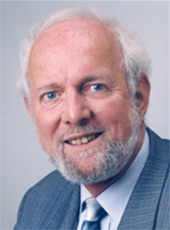 |
| |
|
|
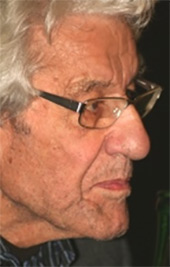 |
Hans-Peter Dürr (Germany) was Director Emeritus of the Max Planck Institute for Physics and Astrophysics, Professor Emeritus of Ludwig-Maximilians-University Munich, and Visiting Professor of the Graduate School of Environmental Studies, Nagoya University. Dr Dürr was born in Stuttgart, Germany in 1929, and is an honorary citizen of Munich, Germany, and a successor to Dr Heisenberg. He worked at the Max Planck Institute as a young co-researcher of Dr Heisenberg, and contributed to the establishment of quantum mechanics and unified field theory. He is one of those who issued the 2005 Potsdam Manifesto, a follow-up to the 1955 Russell-Einstein Manifesto, and he has explained the nuclear crisis and Gaia’s sustainability in a unified manner, appealing to the public. He has authored Unified Theories of Elementary Particles (Springer), Gott, der Mensch und die Wissenschaft (Pattloch) and many others. He has won the Right Livelihood Award (often referred to as “Alternative Nobel Prize”), the Order of Merit of the Federal Republic of Germany, and other awards.
Photo Credit: Vereinigung Deutscher Wissenschaftler (VDW) – Federation of German Scientists (FGS).
Dr Hans-Peter Dürr passed away on 18 May 2014 at the age of 84. |
| |
|
Shohei Yonemoto (Japan) is Professor of the Graduate University for Advanced Studies, and Visiting Professor of the Graduate School of Environmental Studies, Nagoya University. Born in Aichi Prefecture, Japan, in 1946, Mr Yonemoto graduated from Kyoto University in 1972 and joined Maruman Securities, then Mitsubishi Kasei Institute of Life Science in 1976. In April 2002, he became President of the Center of Life Science and Society, a think-tank which studied bioethics and science technology policy. From 2007 after leaving the Center, he worked as Professor of the Research Center for Advanced Science and Technology, the University of Tokyo. He has held his current position since 2009. He studies the history as well as the philosophy of science, and has authored Bioethics (in Japanese; Kodansha Gendai Shinsho), Heredity Management Society (in Japanese; Kobundo), What are Global Environment Problems? (in Japanese; Iwanami Shinsho), Eugenics and Human Society (in Japanese; co-authored, Kodansha Gendai Shinsho), and others. |
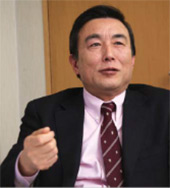 |
| |
|
On the Moderators
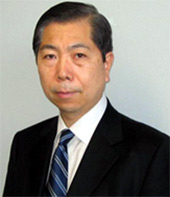 |
Hidefumi Imura (Japan) is Senior Project Manager at Yokohama City University, Contract Professor of the Global Cooperation Institute of Sustainable Cities, and Professor Emeritus of Nagoya University. Born in Ishikawa Prefecture, Japan in 1947, Dr Imura graduated from the Faculty of Engineering, the University of Tokyo, in 1969, and completed his postgraduate study at the Department of Applied Physics, Graduate School of Engineering, the University of Tokyo in 1974, which awarded him a doctorate in engineering. In the same year, he started to work for Japan’s former Environmental Agency. He also worked for the Ministry of Foreign Affairs and Yokohama City. He was Associate Professor and later Professor of Kyushu University, and Professor of the Graduate School of Engineering, Nagoya University, before becoming Professor of Nagoya University’s Graduate School of Environmental Studies in 2001. He specializes in environmental systems analysis. He has authored Environmental Systems Studies: A Macroscope for Understanding and Operating Spaceship Earth (Springer) and Environmental Issues in China Today: A View from Japan (Springer), among others. |
| |
|
Ayumi Iio (Japan) is Editorial Writer for the Nagoya Head Office of the Chunichi Shimbun. Born in Aichi Prefecture, Japan in 1960, Mr Iio joined the Chunichi Shimbun in 1985, working at the Gifu Office before moving to the Nagoya Head Office. He belonged to the Community and Economic Affairs Team of the Community Department, and mainly reported waste disposal issues. He was a member of the team which published the report, How we can solve the problem of waste disposal? (in Japanese), as part of a campaign to debate the problems of industrial waste. He has held his current position since 2002, chiefly responsible for environmental and agricultural issues |
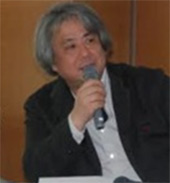 |
| |
|

On the Graduate School of Environmental Studies, Nagoya University:
Message from the Dean
Creating and Developing a New Discipline Called “Environmental Studies”
Our graduate school, the Nagoya University Graduate School of Environmental Studies, consists of three departments; Earth and Environmental Sciences, Environmental Engineering and Architecture, and Social and Human Environment. Our faculty members cover fields in natural sciences, engineering, and humanities in order to exercise our most basic principles – to thoroughly examine existing disciplines, and create an Environmental Studies program founded upon the two main pillars of Sustainability Studies and Safety & Security Science.
There may be many paths to creating a new discipline, but I believe that collaborative research is the cornerstone of our Environmental Studies program. When academics in natural sciences, engineering, and humanities profoundly explore their respective disciplines, they will reach a kind of common knowledge and wisdom. Academic experts with such valuable knowledge are able to understand the essences of disciplines outside of their own. When a need for collaboration is triggered by social demands or students' ambitions, these academic experts from differing fields can come together to pioneer a new discipline integrating fields in natural sciences, engineering, and humanities. It all begins with collaborative research, and this is how we created a new type of Environmental Studies at our graduate school.
Our school has experienced tremendous growth since its establishment in 2001. Our faculty has undergone generational changes and seen an increase in a new breed of member who is more relevant and better equipped to respond to the challenges presented by our students and this new discipline. The Integrated Environmental Studies Course was established under the theme "From Earth System Science to Basic and Clinical Environmental Studies" with support from the Global Center of Excellence (GCOE) program by the Ministry of Education, Culture, Sports, Science and Technology (MEXT). The Nagoya University Global Environmental Leaders Program (NUGELP) was also established with support from MEXT. These efforts have been undertaken with the collaboration of interdisciplinary teams from our school as well as the Graduate School of Bioagricultural Sciences, the Graduate School of Engineering, and the Graduate School of International Development.
People in pursuit of in-depth knowledge in existing disciplines, people integrating existing disciplines to pioneer a new discipline, and people bringing those people together. This broad spectrum of faculty members and students are, and always will be, the driving force of our school.
Hiroshi KANZAWA
Dean of the Graduate School of Environmental Studies, Nagoya University
Address: Graduate School of Environmental Studies, Nagoya University, Furo-cho, Chikusa-ku, Nagoya 464-8601, Japan
Website: <http://www.env.nagoya-u.ac.jp/en/>.
|
|
|